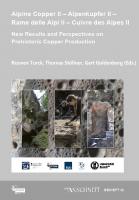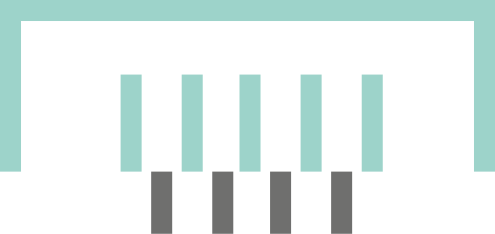Alpine Copper II – Alpenkupfer II – Rame delle Alpi II – Ciuvre des Alpes II. New Results and Perspectives on Prehistoric Copper Production
Keywords:
alpine copper production, metal provenance studies, mining, social interactions, spatial interactions, technology, trade, prehistoric smeltingSynopsis
The exploitation of copper deposits in the mountainous areas of the Alps gained enormous economic importance particularly in the 2nd and 1st millennium B.C., as Alpine copper began to play a central role in the metal supply of Europe. This volume summarises the current state of research on prehistoric Alpine copper exploitation from the western and southern Alps to the gates of Vienna in the eastern Alps. The 23 papers were originally presented as contributions to a conference held in September 2016 at the University of Innsbruck, which covered topics such as mountain landscapes, mining, beneficiation, smelting and the metal trade in the Bronze and Early Iron Ages. A particular focus of the present volume is the D-A-CH-funded project on ‘Prehistoric copper production in the Eastern and Central Alps: technical, social and economic dynamics in space and time’, a research collaboration between partners in Germany, Austria and Switzerland. The various contributions provide new perspectives on the questions surrounding fahlore and the different technological processes within the framework of a broader ‘chaîne opératoire’. Even with the current stage of research, it is already possible to sketch how different Alpine regions adapted more general technological and economic trends surrounding copper exploitation in very different ways.
Chapters
-
Front matter and content
-
Preface
-
Enmeshment within resource-scapes – Eastern Alpine copper production of the Bronze and Early Iron Age
-
Bronze Age copper production in Kitzbühel, Tyrol
-
Prehistoric copper production in Lower Austria – A new assessment
-
A methodology to integrate information in prehistoric mining archaeology research
-
Early Bronze Age copper extraction(s) in the Grandes Rousses Massif (Isère and Savoy departments, France)
-
Prehistoric mining in a small medieval mining district in Montafon, Vorarlberg (Austria)
-
Prospecting for copper – Mineralogical and first mining archaeological surveys in western North Tyrol, Austria
-
Late Bronze Age/Early Iron Age fahlore mining in the Lower Inn Valley (North Tyrol, Austria)
-
Mineral-chemical characterisation of chalcopyrites and fahlore-group minerals from selected Cu-ore deposits in the Eastern Alps
-
Between mining and smelting in the Bronze Age – Beneficiation processes in an Alpine copper producing districtResults of 2008 to 2017 excavations at the “Sulzbach-Moos”-bog at the Mitterberg (Salzburg, Austria)
-
Some provisional results of experiments undertaken using a reconstructed sluice box an attempt to try and reproduce the methods of washing and concentrating chalcopyrite at the Middle Bronze Age ore processing site of Troiboden, Mitterberg, Austria
-
Organising smelting places. A keynote on Iron Age copper smelting in the Oberhalbstein (Canton of Grisons, Switzerland)
-
Copper smelting slag from the Oberhalbstein (Canton of Grisons, Switzerland)Methodological considerations on typology and morphology
-
Dendrochronological dating of charcoal from high-altitude prehistoric copper mining and smelting sites in the Oberhalbstein Valley (Grisons, Switzerland)
-
Bronze Age copper ore mining and smelting in Trentino (Italy)
-
The Late Bronze Age smelting site Rotholz in the Lower Inn Valley (North Tyrol, Austria)
-
Encapsulated industrial processes: slag-tempered ceramics and its implications for prehistoric metallurgy in the Lower Inn Valley (North Tyrol, Austria)
-
Slag heap quantification: re-evaluating the Mitterberg smelting sites
-
Metallographic analyses from the late Urnfield period copper mining settlement at Prigglitz-Gasteil in Lower Austria
-
Copper and bronze axes from Western Austria reflecting the use of different copper types from the Early Bronze Age to the Early Iron Age
-
Composition and spatial distribution of Bronze Age planoconvex copper ingots from Salzburg, Austria:First results from the “Salzburger Gusskuchenprojekt”
-
Recording plano-convex ingots (Gusskuchen) from Late Bronze Age Styria and Upper Austria – A short manual for the documentation of morphological and technological features from production and partition
-
The metal analyses of the SSN-project (with catalogue)
-
Peer-reviewers of this volume





